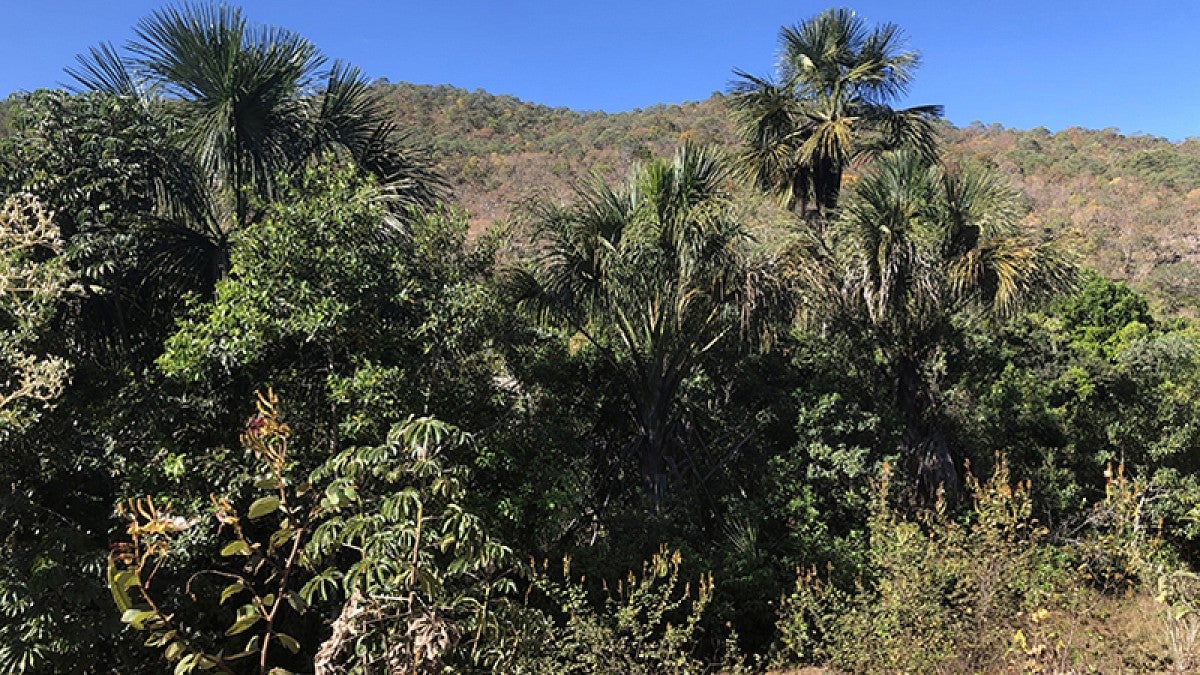As a California high school student, Jamie Wright thought her family’s finances meant college was out of reach. Now, the UO doctoral student is lead author on a paper that provides a baseline map covering 1,600 years of human and climate impacts on soil in the Amazon.
Her project, done as a member of co-author Lucas Silva’s Soil Plant Atmosphere Research Lab, details vegetation changes and carbon isotope signatures in the soil at 83 sites on the transition zones of forest and savannas. The study published online Oct. 31 ahead of print in the journal Global Change Biology.
“The past, like most things, leaves a trace behind and with it a rich history left to be told,” Wright said. “Through the use of soil science, specifically with carbon isotopes, we unearthed a history of forest expansion over several millennia. This region is at the epicenter of deforestation and socioecological transformations that cause and drive climate change.”
The forest-savanna borderlands, known as the Amazon-Cerrado transition, experience broad climatic and ecological influences. The study addressed uncertainties related to those influences in the tropical ecosystem, said Silva, a professor in the Environmental Studies Program, Department of Geography and Institute of Ecology and Evolution.
“Our data indicate a regional increase in tree cover prior to modern deforestation, which could help inform conservation and management for climate change mitigation,” Silva said. “We hope that our research will lead to a greater appreciation of ecological processes in the region and their importance for global climatic stability.”
Earlier research had suggested that forest expansion was primarily driven by increased precipitation, but that work, Silva noted, did not fully consider local influences, such as fire frequency and intensity or whether it was occurring because of climate dynamics. Focusing on soil changes, he said, allowed for these factors to be examined.
“Carbon storage in woody savannas and forests plants at this large of a scale can be a significant carbon sink,” Wright said. “Increasing tree cover also can ameliorate adverse climatic change impacts, such as droughts, by influencing the hydrological cycle and generating rain clouds.”
In total, 742 soil samples were taken from forests, savannas and transition zones across a large swath of north-central Brazil, between latitudes 4 to 16 degrees south and longitudes 46 to 56 degrees west, an area where precipitation and distribution vary significantly.
The researchers also measured the leaf index of the forest canopy to understand changes in carbon isotope signatures in the soil. Such changes reflect land usage. To determine changes over time, radiocarbon activity and isotopic ratios were profiled in 43 selected depths.
The research was co-led by Barbara Bomfim, a former postdoctoral researcher in Silva’s lab now at the Lawrence Berkeley National Laboratory. Other team members were researchers at Boston College and the State University of Mato Grosso in Nova Xavantina, Brazil.

The team is continuing to work with collaborators in the Amazon region in an effort to secure funding to launch a reforestation project that could help weather the storm of climate change, Silva said.
For Wright, who is pursuing a doctorate in environmental sciences, studies and policy in the UO’s Environmental Studies Program, the ongoing research is the continuation of her interest in climate-related issues that began when she was in high school in Woodland, California, northwest of Sacramento.
“When I was 16, I never thought I’d be going to college, but I joined a program that linked college students with high school juniors to carry out a climatic change-related science experiment,” she said. “I ultimately continued down this path, made it to college, and stuck with environmental science.”
At the University of California, Davis, Wright earned a bachelor’s degree in environmental science and management, focusing on soil science and biogeochemistry. On arrival at the UO, Silva offered her an opportunity to work in the Amazon.
“I was all in,” she said.
The National Science Foundation and Brazil’s National Council for Scientific and Technological Development funded the research. Additional support came from a 2019 Resilience Initiative Interdisciplinary Seed Funding award given by the UO’s Office of the Vice President for Research and Innovation.
—By Jim Barlow, University Communications


